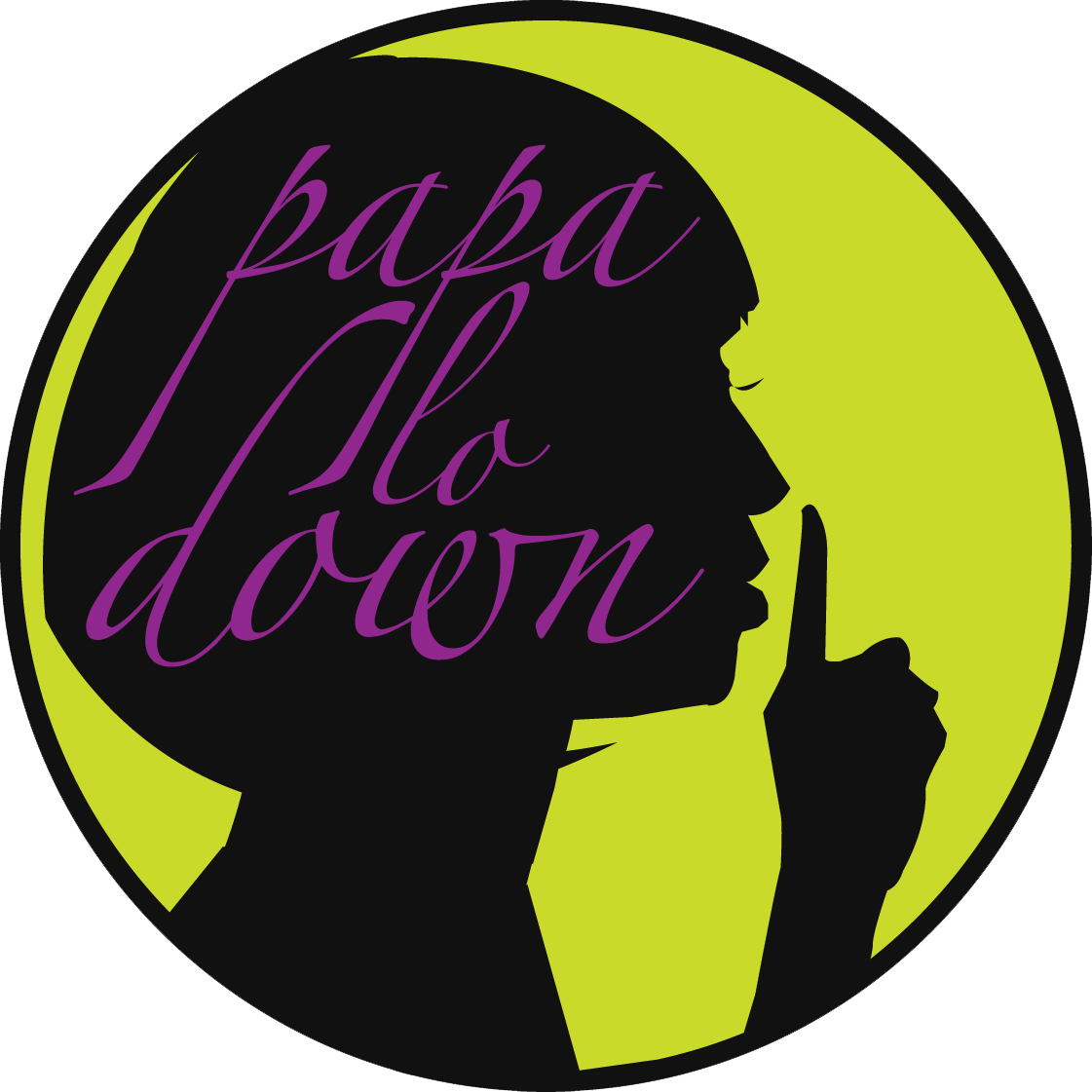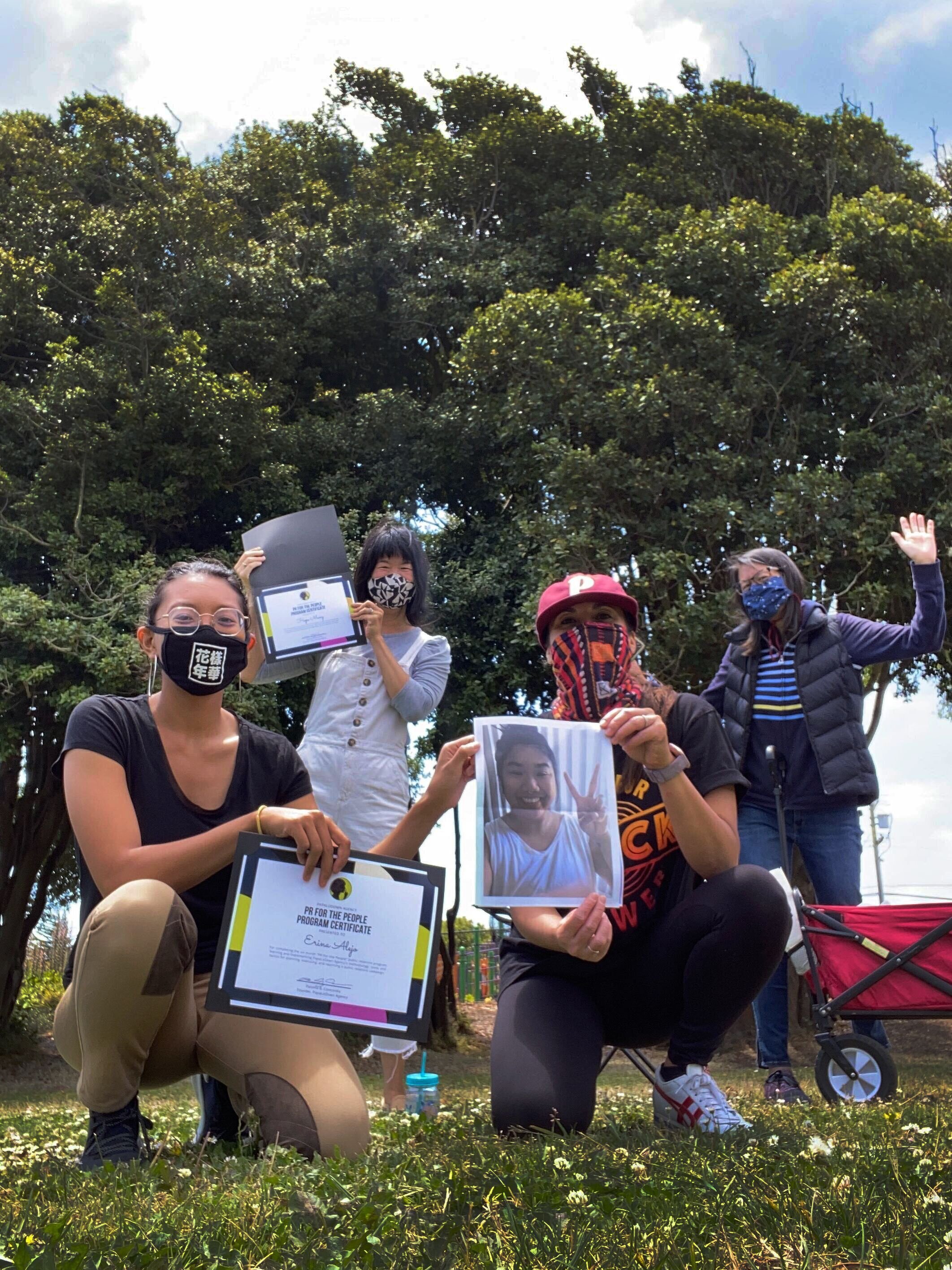PR for the People Spotlight: Erina Alejo | Artist
This is a series of interviews with participants in PapaLoDown’s ‘PR for the People workshop’. Hear first hand from amazing people and organizations, who are learning how to amplify their stories in the news, grow their visibility and attract new opportunities.
Meet Erina Alejo, artist, educator, and archivist.
Photo by Michael Byun
What is your background and experience?
I am a third-generation renter in my place of birth, San Francisco, which informs my work as an artist, educator, and archivist.
Presently, I am an arts administrator at the Office of the Vice President of the Arts at Stanford University. I wear many hats as a cultural worker rooted in collective organizing: from working as an educator at spaces like my alma mater FEC Galing Bata Bilingual Program, Sama Sama Cooperative, Pin@y Educational Partnerships, and Southern Exposure; co-curating exhibitions at spaces like SOMArts and the Japanese American Museum of San Jose; working the box office and painting the walls at Bindlestiff Studio; carrying 30lbs+ of gear as a National Geographic photo assistant for a cover story on Bay Area essential workers-- you name it, I’m down to learn and do! Pre-COVID, I show up to community gatherings in SOMA Pilipinas with a camera in hand to document our community cultural wealth.
On the side, I teach about the intersections of Ethnic Studies, photography and urban planning through SoMapagmahal Photo Mxntorship Program, am a member of Appendix Collective, and build internationally with arts administrators across institutions. In my free time, I surf at first light and tend to little beings in my 10 gallon planted aquarium.
Newborn cherry shrimp in our family aquarium (photobombed by our guppy)
What is the current Public Relations (PR) campaign you're working on about?
I joined PR for the People for my decades-long project, A Hxstory of Renting. AHOR is a multiplatform, relentless body of research and archives documenting the anti-displacement resilience of my city through my lens as a third-gen renter.
For my AHOR book project, I recently learned and wrote that my grandaunt, “Lola” Marina Peña (currently 98 years young), was the first in my maternal family to migrate to the U.S. In 1959, Lola migrated to Pittsburg, California as a renter of a two-bedroom apartment with family. That moment has since shaped my and my family’s life as they followed Lola to the Bay Area. I find it sobering that six decades later, my family and I remain as renters in our city. The housing crisis shapes my generation’s hardship, along with many intergenerational, working class families, especially of color-- a struggle compounded by the COVID-19 pandemic and loss of livelihood. This is why we must listen and embrace current uprisings that voice what must ultimately change in our society and systems of power-- AHOR is part of such momentum. I’m learning that AHOR is a powerful and worthwhile project to share, and is part of this counternarrative to combat my city’s cultural amnesia and complicity in gentrification and displacement.
Aubrey, Chelsea Calalay, and Kate Dash, Excelsior, San Francisco.
What goals do you hope to accomplish through this PR campaign?
While the COVID-19 pandemic has postponed AHOR exhibitions, including my solo show, I learned to adapt by promoting the online events through which I present AHOR, honing my writing skills through crafting photo essays and newsletters, intentionally using social media to share bits about my practice, and pitching my story to media outlets. I’m preparing to publish the photo book portion of AHOR this fall, aside from related commissions. While my time in PR for the People has ended, I’m putting into practice what I learned to further my campaign and map out a whole PR timeline.
How has the experience of pitching and working with media to amplify the stories in your PR campaign been like so far?
It’s a lot of work, especially because I personally, historically struggle with promoting and telling folx what I’m up to. Kind of like my archival work, I’m slow to act. I’m really glad to be in a strong cohort of amazing cultural workers, and most are super mommas-- Dara, Hope, and Jean, led by Paloma-- because I lean on and learn from them about the trials and successes of building a PR campaign from scratch.
As a cohort of Asian-American womxn, we also discussed our privileged positionality (and at times, internal and external perception of invisibility) of pitching and promoting our own projects during this important time of amplifying the All Black Lives Matter Movement, among many movements reflected by uprisings. I can’t speak for my cohort, but we discussed the need to continue educating ourselves on life-long personal and collective actions to support this movement work. At times pitching felt like taking up space that could be meant for furthering the current momentum. However, Paloma sagely reminded us that it doesn’t hurt at all to continue pitching-- it plants seeds and these stories will eventually find their places and spaces alongside, and, even, in support.
PR for the People Batch 2. L-R: Erina, Hope, Dara (picture), Paloma, Jean. Photo by Hope Meng.
What are a few things you know now about PR that you didn't know before you started?
PR work is growing tough skin, remaining consistent in pitching and reaching out, and being steadfast in compassion for ourselves and those we reach out to, even when things aren’t going as planned. PR can also be surprising-- there will be folx genuinely interested in sharing your story, hyping you up, and spreading the good word! I’m reminded of how pitching can take several years to blossom into public content-- just like the success of Kearny Street Workshop being featured on NBC News, solidified with the help of PR for the People participant and dear friend Diana Li.
As Jean Chen previously said, PR requires us to remain abreast of technology and following trends--Twitter is a good place for that, especially for and to connect with journalists. I also learned that PR goes way beyond self-promotion on Instagram and Facebook, although is an integral part of it-- if that’s what one has the capacity for.
What other projects are you working on that we should have on our radar?
Stay tuned for the photo book publication of A Hxstory of Renting this fall, among other facets of this project. The book project is possible because of my amazing team who believe in my work: co-producers Lian Ladia and Jerlyn Jareunpoon-Phillips, and contributing writers David Woo, Janet Delaney and Jerome Reyes. AHOR has been a serious undertaking of mine for the last half decade, and I’m excited to finally gather the courage to share with you all the forms it has taken and will take, including the book!




